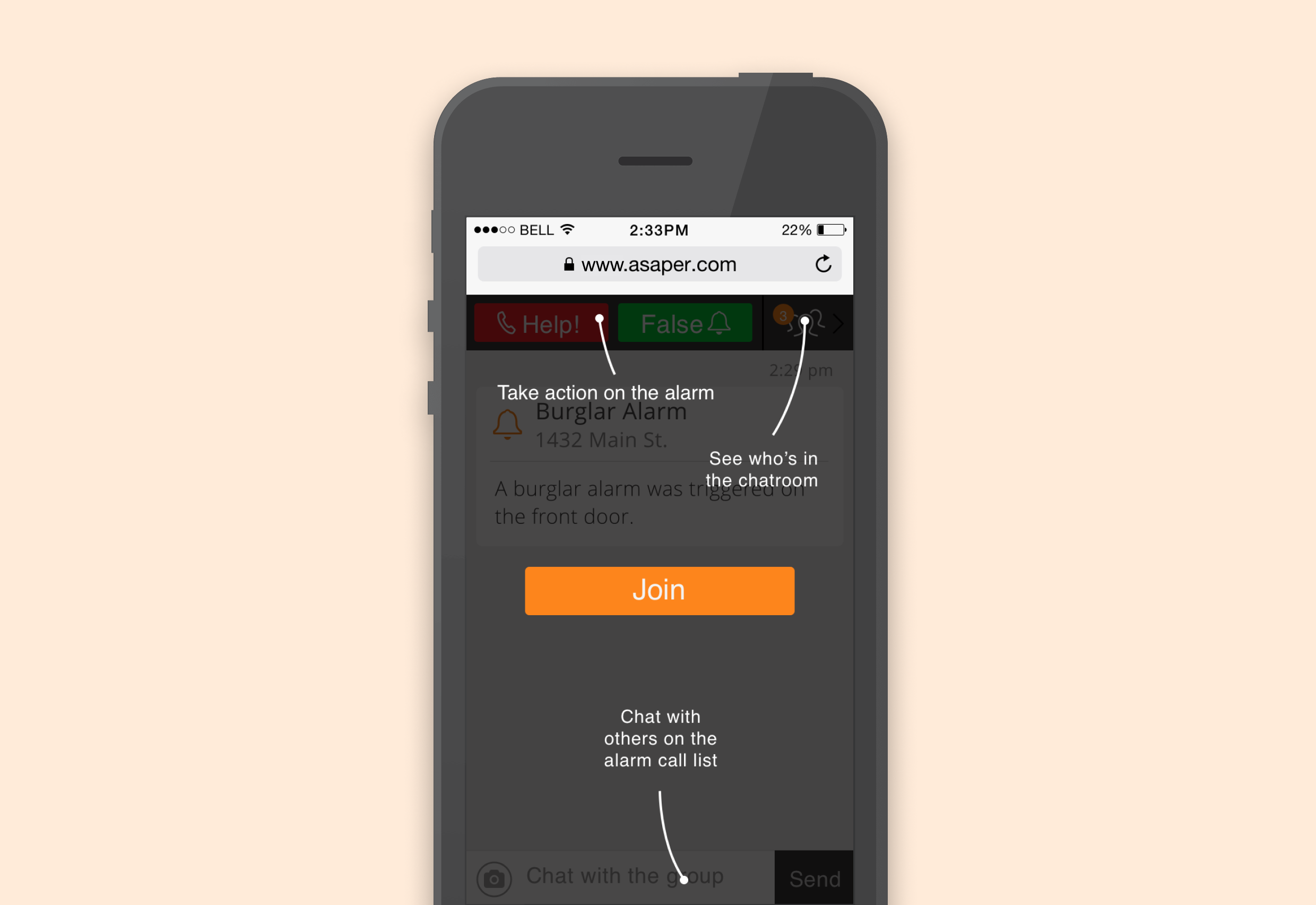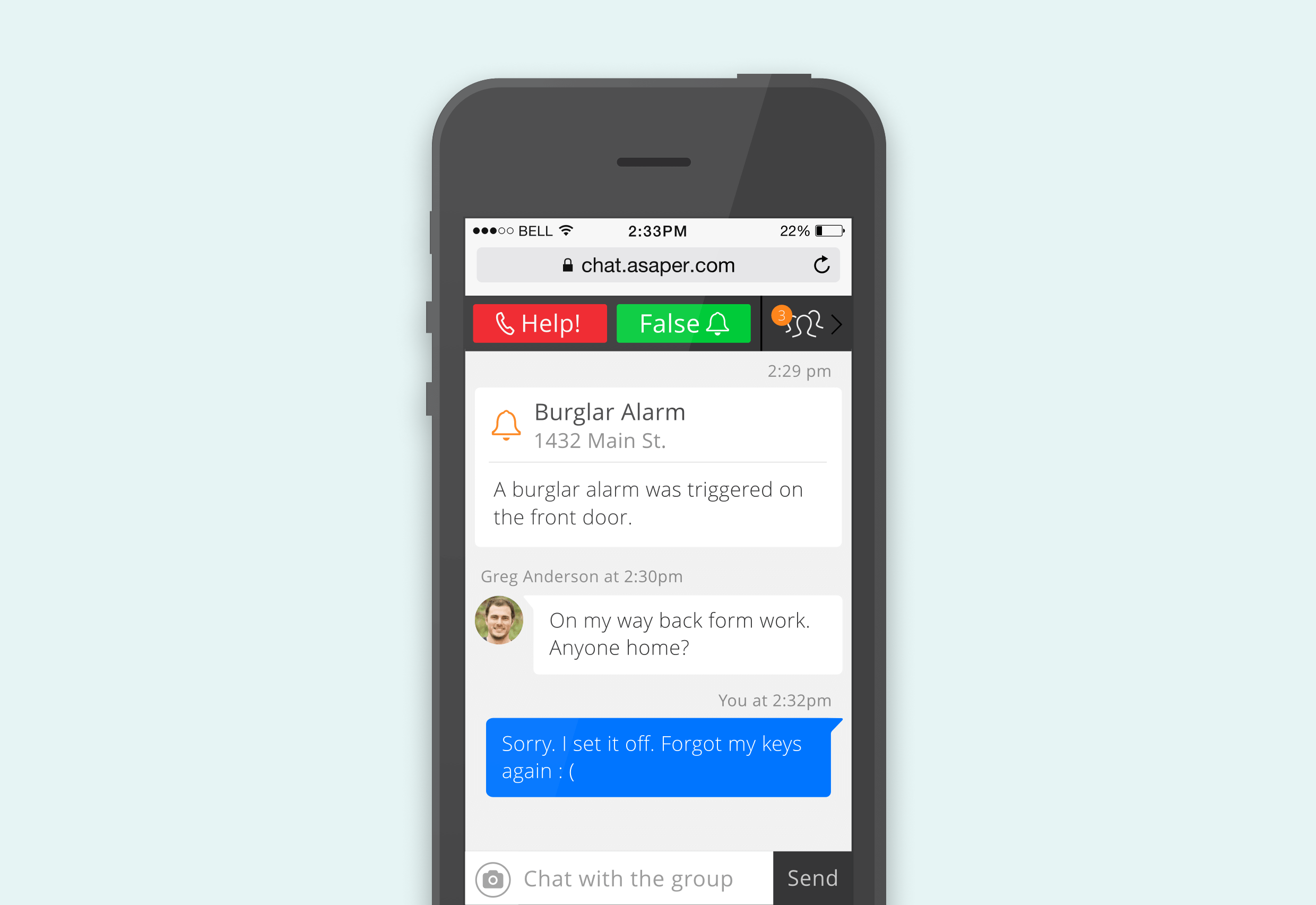ASAPer: Reimagining Emergency Communication for Security Alarms

Background
As of 2014, home security alarms were still operating on 20th century technology. When an alarm went off, a call center agent would call a list of emergency contacts one-by-one, often from an 800 number that was easily ignored.
The result was a high percentage of false alarms and customers who were left in the dark as serious emergencies occurred at their homes.
Challenge
Our high-level goal was to modernize the alarm response process and make it:
- Faster – the existing average time to notify a customer of an alarm was 5.5 minutes.
- More transparent – provides customers more details on the alarm status process beyond the initial notification.
- More accessible – doesn't require answering a phone call at the exact right moment.
Role, Team, & Timeline
My role was a hybrid Product Manager/Designer. I collaborated with ASAPer's founder/business lead and four engineers.
We designed and built the ASAPer MVP over the course of year starting in late 2013.
Constraints
Our primary constraint was the nature of the alarm monitoring industry, which is understandably risk-averse and highly regulated. Additionally, alarm monitoring centers operate on closed, legacy software that's not conducive to 3rd-party integrations.
Research & Preparation
To kick things off, we conducted semi-structured interviews with:
- Home security customers
- Alarm monitoring center agents
- Industry experts
- Law Enforcement
Next, we analyzed dozens of agent call recordings provided by an alarm monitoring center we had partnered with.
Key Findings
For customers:
- Peace of mind is the top priority – They want to know as quickly as possible that their family and belongings are safe. After receiving the alarm notification call, they would often immediately track down their family members to make sure they were out of harms' way.
- Alarms are hard to cancel – It's very easy to accidentally trigger false on their systems, but the only way to cancel an alarm was to wait for the call from the monitoring agent.
- Alarm notifications are easy to miss – calls were often seen as spam or customers were not in situations where they could pick up the phone.
- A wide range of preferred notification channels – some customers were fine with alarm notification calls, while others preferred SMS or email. Younger customers expected an app-like solution.
For monitoring agents:
- Calls frequently go unanswered – agents reported often calling the entire emergency contact list without a single person answering.
For law enforcement:
- Frequent false alarms erode trust in the system – police in many jurisdictions began imposing fines in response to excessive false alarms. This incentivized customers to stop using their security systems all together.
Technical Research
Another key component of the process was to determine what was technically feasible. A very smart engineer on our team was able to find a hidden read-only API in the Alarm Monitoring software. This gave us access fine-grain chronological alarm data that could be used keep customers informed.
Solution
A multi-channel communication platform for resolving alarms.
Instead of sequentially contacting each person on the call list, our solution was to immediately alert all contact list members via their preferred medium of communication.

SMS or Email alerts provided information on the alarm and the option to continue to the ASAPer web app:

A key choice we made was to have ASAPer require no setup on the part of the users. Many call list members are simply friends and neighbors, and in an emergency, there's little time to download and sign up for an iOS or Android App.
To quickly onboard users, we used coach marks to provide clear instructions on how to use the web app.

The core web app experience is the chat and activity feed. The feed begins with the initial alarm notification. From there, users can chat with each other and receive automated updates on the alarm's status.

Prominent in the Navbar are alarm actions. Here, all members can get emergency assistance, while authorized members can disarm false alarms.

Marketing & Launch
We initially marketed ASAPer as a whitelabel-able SaaS service for alarm monitoring companies, but ultimately joined LiveWatch, becoming an exclusive feature of their self-install home security systems.
After a successful test launch with a subset of LiveWatch customers, ASAPer was rolled out to their entire customer base and awarded a U.S. Patent.
As a result of the rapid, multi-channel alerts and false alarm disarm button, average alarm resolution times dropped to around one minute from 5.5 minutes.
